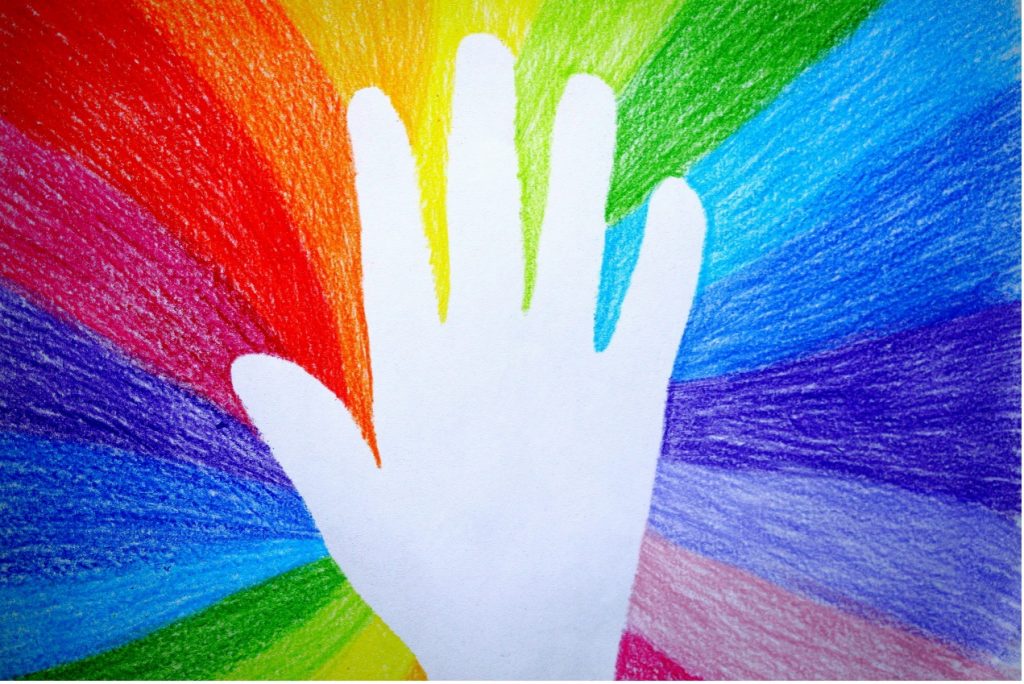
Self-harm is a worldwide public well being drawback (Hawton et al., 2003). In England, roughly 200,000 adolescents aged 12 to 17 have interaction in self-harming behaviour yearly with out receiving scientific assist and moreover, round 21,000 adolescents search medical remedy following self-harm incidents (Geulayov, et al., 2018; Morgan et al., 2017; Patalay & Gage, 2019).
The charges of self-harm amongst adults with disabilities are increased (Khazem, 2018; Khurana et al., 2021), however there are various outcomes relating to adolescents with disabilities (King et al., 2019; Tejera et al., 2019).
Therefore, this research was carried out to contribute to information development and higher perceive the prevalence and danger components for self-harm in adolescents, each with and with out disabilities.

Adults with disabilities are at increased danger of self-harm in comparison with these with out – what about adolescents?
Strategies
The researchers used secondary information from the Millennium Cohort Research; a cohort of youngsters born between 2000 and 2002 (Plewis et al., 2007). The contributors have been chosen randomly by using baby profit data. The info was collected from adolescents aged 14 and 17 utilizing interviews with mother and father and adolescents. At age 14, 11,726 adolescents participated in interviews together with parental info, and at age 17, 9528 adolescents took half within the interview.
Incapacity was assessed with an affirmative response to having bodily or psychological well being situations lasting 12 months or extra. A follow-up response of diminished potential both ‘rather a lot’ or ‘just a little’ was used to tell apart between extra and fewer limiting incapacity.
The authors additionally evaluated the lifetime prevalence of self-harm at age 17 and 12-month prevalence of six completely different self-harm behaviors. Different potential danger components for self-harm have been sexual orientation, publicity to bullying, and self-report measure of melancholy at age 14.
To handle potential biases on account of sampling and attrition, inverse chance weighting was executed. In addition they accounted for clustering in survey design utilizing survey information evaluation choices. Adjusted prevalence price ratios have been estimated to match the chance of self-harm amongst adolescents with disabilities to these with out disabilities.
Outcomes
Prevalence of incapacity
Out of 9,528 contributors aged 17:
- 12.4% of adolescents reported some type of incapacity
- 7.7% had much less limiting disabilities
- 4.7% had extra limiting disabilities
Prevalence of self-harm
The lifetime prevalence of suicide makes an attempt was 25.5% amongst these with extra limiting disabilities, 21.9% amongst these with much less limiting disabilities, and 5.3% amongst these with out disabilities. Adolescents with extra extreme disabilities had 3.87 instances the chance of trying suicide of their lifetime in comparison with adolescents with none incapacity, whereas these with much less extreme disabilities had 3.67 instances the chance.
Useful impairments
After adjusting for intercourse, ethnicity and poverty, out of 9 useful impairments, these associated to psychological well being, studying, and reminiscence have been strongly related to increased charges of self-harm. As an example, the adjusted prevalence price ratios (APRR) for suicide makes an attempt have been 5.13 (95% CI 3.58 to 7.36) for psychological well being limitations and three.64 (95% CI 2.72 to 4.88) for studying/understanding impairments. Useful impairments comparable to imaginative and prescient and mobility didn’t present vital affiliation with self-harm behaviors within the final yr.
Danger components
The research recognized a number of danger components related to the prevalence of self-harm amongst adolescents with and with out disabilities.
As compared, adolescents with out incapacity being feminine, LGBTQ+ orientation, raised in households with poverty revenue and self-report melancholy elevated the chance of lifetime self-harm amongst adolescents with incapacity. Whereas self-harm within the earlier yr was reported by adolescents with a incapacity who have been feminine (5 self-harm acts), extra limiting incapacity, and ethnic minority (2 self-harm acts).
For adolescents with out incapacity, adolescents belonging to the ‘non-heterosexuals’ group elevated the chance of trying suicide of their lifetime and self-harm behaviours up to now yr, adopted by being feminine intercourse and bullying at ages 7, 11 and 14 years.

This analysis means that adolescents with psychological well being and studying difficulties have the next danger of self-harm.
Conclusions
The research signifies that adolescents with disabilities face a considerably increased danger of participating in self-harm and trying suicide in comparison with their non-disabled friends, with danger extra pronounced amongst these with extra limiting disabilities. The research additionally highlights the complexity of the connection between incapacity and self-harm suggesting that the chance is extra linked to cognitive and psychological well being impairments than to bodily impairments comparable to imaginative and prescient and mobility. Being feminine, or of LGBTQ+ orientation have been key components for self-harm amongst adolescents with disabilities.

Being a LGBTQ+ adolescent with disabilities was recognized as key danger issue for self-harm.
Strengths and limitations
One of many main strengths is that the researchers have addressed a essential hole within the literature by specializing in adolescents with disabilities; a gaggle that’s underrepresented in analysis on self-harm utilizing the information from the Millenium Cohort research which supplies a nationally consultant pattern of adolescents within the UK. The useful impairment categorisation allowed for an in depth evaluation of various kinds of disabilities related to self-harm behaviours.
With information on self-harm and incapacity counting on self-report there may be the potential of recall bias and social desirability bias for adolescents who may under-report info on self-harming behaviours.
As this research is a cross-sectional design; therefore, though associations might be recognized, it isn’t potential to find out whether or not the disabilities straight trigger the elevated danger of self-harm.
The research additionally doesn’t account for adjustments over time or repeat self-harm. This limits the understanding of how self-harm behaviours have advanced or endured as adolescents get older.
Whereas the researchers managed for a number of confounders, there could also be different unmeasured variables as an example college atmosphere, and household dynamics which may affect the connection between incapacity and self-harm.
There may be additionally a scope to discover the prevalence of self-harm amongst adolescents from ethnic minorities with disabilities; a inhabitants that could be additional marginalised.

Longitudinal research are required to higher perceive self-harm and incapacity amongst adolescents.
Implications for follow
The research has some essential implications for follow. With a robust affiliation of psychological well being impairment and studying difficulties, there may be maybe a want for psychological well being companies to display screen for self-harm danger, and depressive signs amongst these teams in colleges and communities. There may be actually a have to strengthen psychological well being assist supplied each in colleges settings and the broader group. The research additionally highlights the necessity for anti-bullying programmes inclusive of scholars with disabilities, which might be accessible and goal to cut back the impression of bullying.
Additional qualitative analysis will assist to discover points of bullying, and the standard of psychological well being companies perceived by adolescents with incapacity, lecturers, mother and father, and well being care suppliers to offer a holistic image. With the next danger of self-harm amongst adolescents with disabilities who establish as LGBTQ+ there’s a want for counselling and assist teams to handle the wants of this distinctive inhabitants. Future longitudinal analysis might be executed by following up the adolescents with incapacity and screening for suicidal behaviours.

The research highlights a necessity for anti-bullying amongst adolescents to guard marginalised populations at increased danger of self-harm.
Assertion of pursuits
No battle of curiosity.
Hyperlinks
Major paper
Different references
Hawton Okay, Harriss L, Corridor S, Simkin S, Bale E, Bond A. Deliberate self-harm in Oxford, 1990–2000: a time of change in affected person traits. Psychological drugs. 2003;33(6):987-95.
Geulayov G, Casey D, McDonald KC, Foster P, Pritchard Okay, Wells C, et al. Incidence of suicide, hospital-presenting non-fatal self-harm, and community-occurring non-fatal self-harm in adolescents in England (the iceberg mannequin of self-harm): a retrospective research. The Lancet Psychiatry. 2018;5(2):167-74.
Morgan C, Webb RT, Carr MJ, Kontopantelis E, Inexperienced J, Chew-Graham CA, et al. Incidence, scientific administration, and mortality danger following self hurt amongst kids and adolescents: cohort research in major care. bmj. 2017;359.
Patalay P, Gage SH. Modifications in millennial adolescent psychological well being and health-related behaviours over 10 years: a inhabitants cohort comparability research. Worldwide journal of epidemiology. 2019;48(5):1650-64.
Khazem LR. Bodily incapacity and suicide: current developments in understanding and future instructions for consideration. Present opinion in psychology. 2018;22:18-22.
Khurana M, Shoham N, Cooper C, Pitman AL. Affiliation between sensory impairment and suicidal ideation and try: a cross-sectional evaluation of nationally consultant English family information. BMJ open. 2021;11(2):e043179.
King TL, Milner A, Aitken Z, Karahalios A, Emerson E, Kavanagh AM. Psychological well being of adolescents: Variations by borderline mental functioning and incapacity. European baby & adolescent psychiatry. 2019;28:1231-40.
Tejera CH, Horner-Johnson W, Andresen EM. Software of an intersectional framework to understanding the affiliation of incapacity and sexual orientation with suicidal ideation amongst Oregon Teenagers. Incapacity and well being journal. 2019;12(4):557-63.
Plewis I, Calderwood L, Hawkes D, Hughes G, Joshi H. The millennium cohort research: technical report on sampling. London: Centre for Longitudinal Research. 2007.












